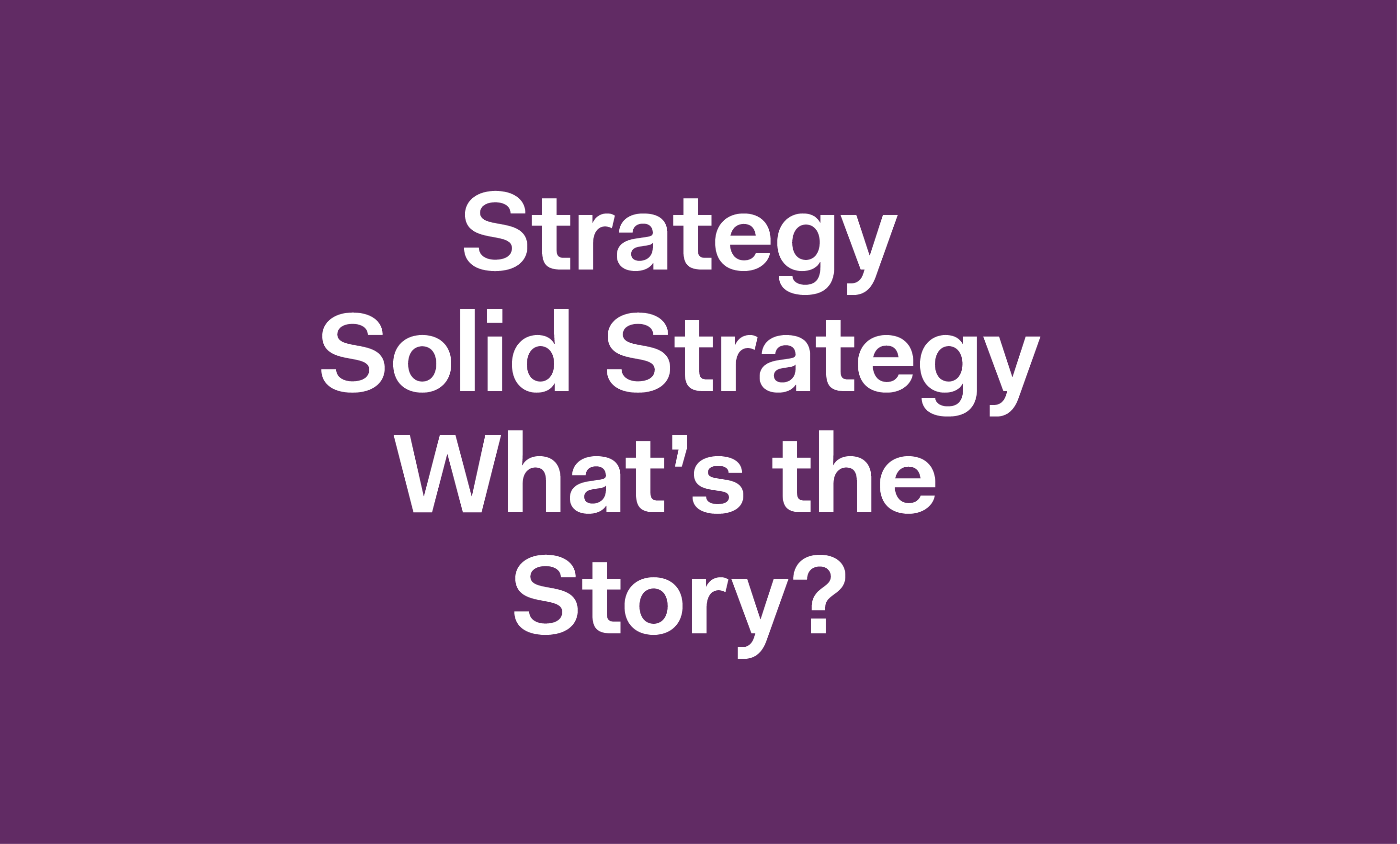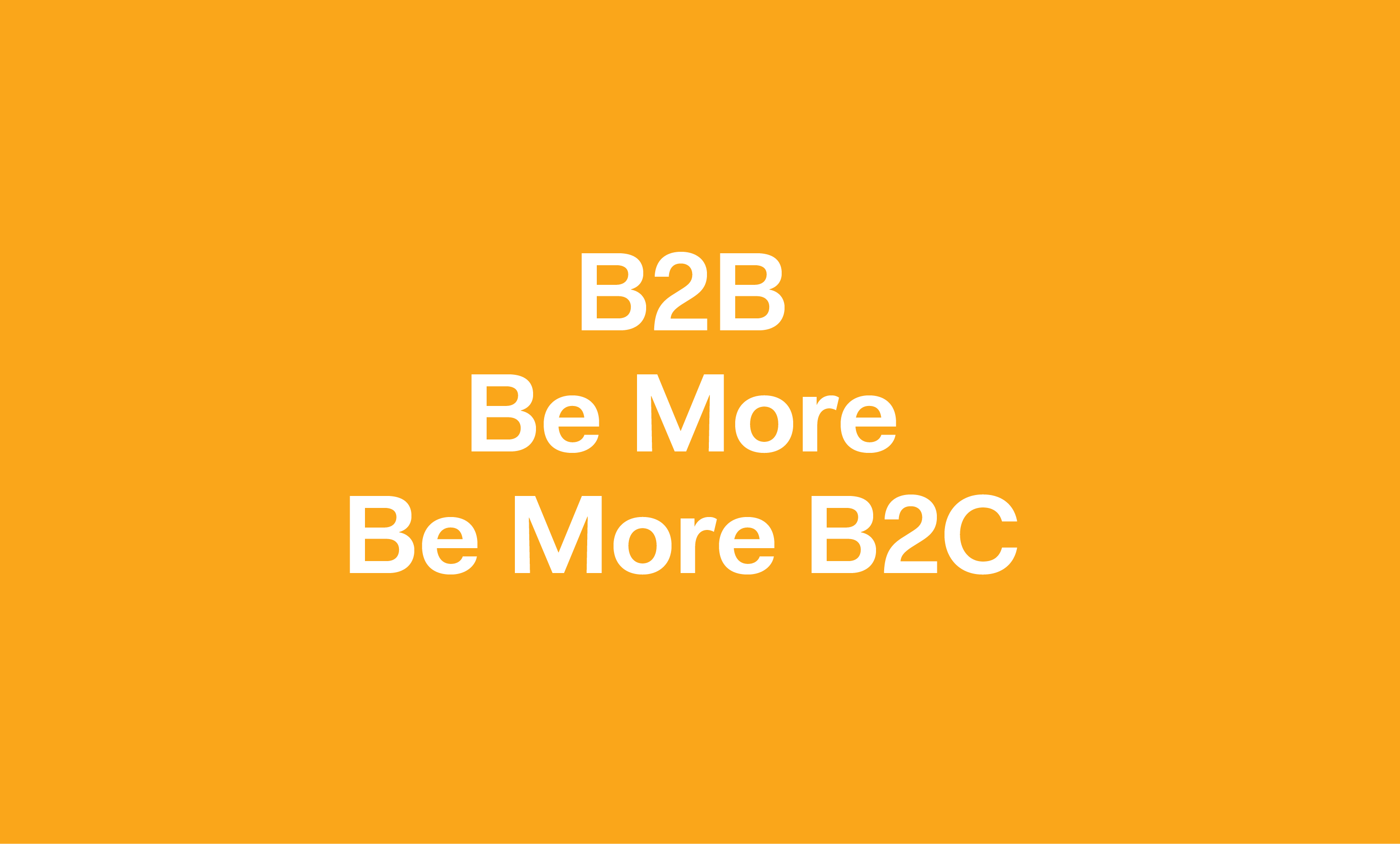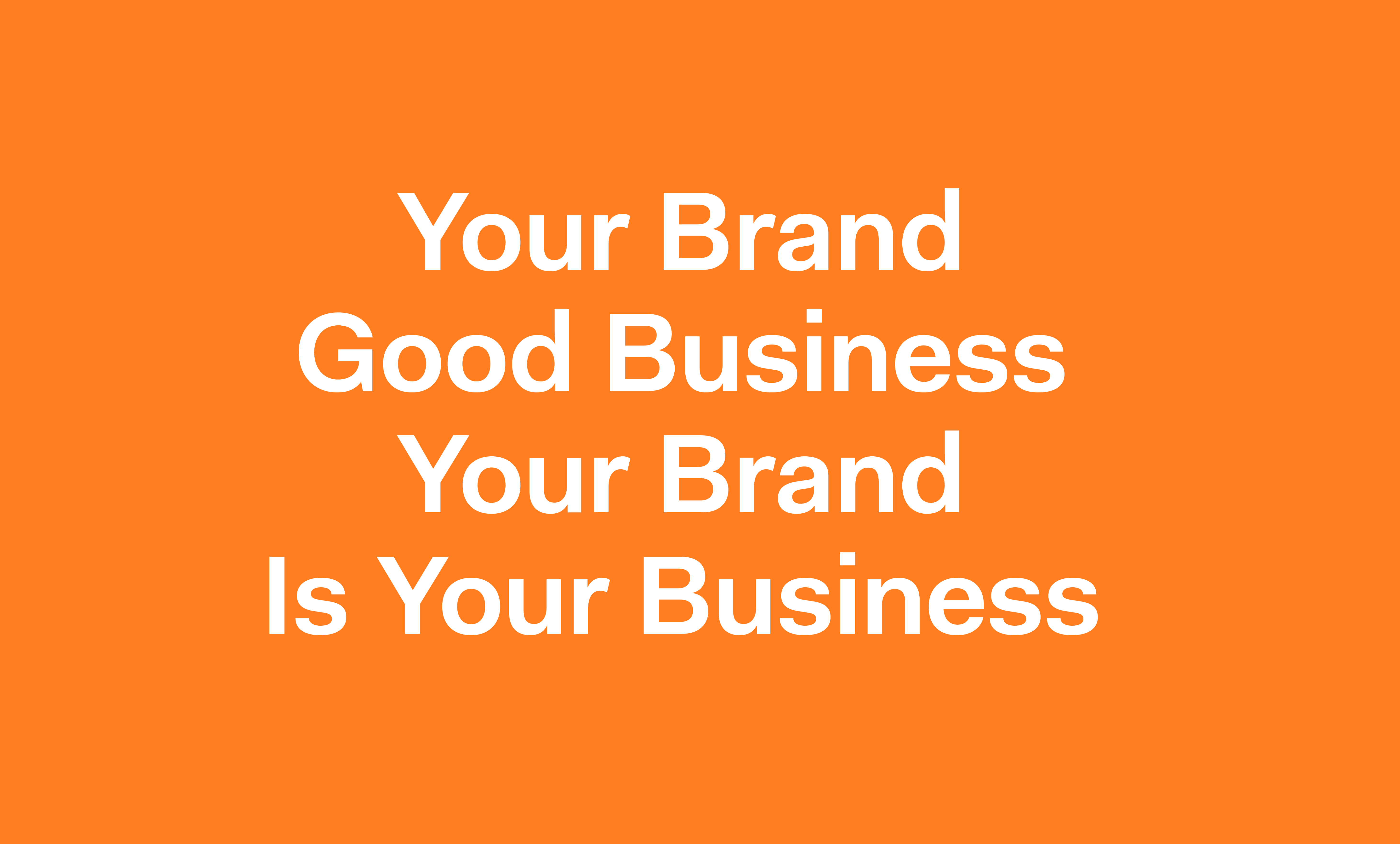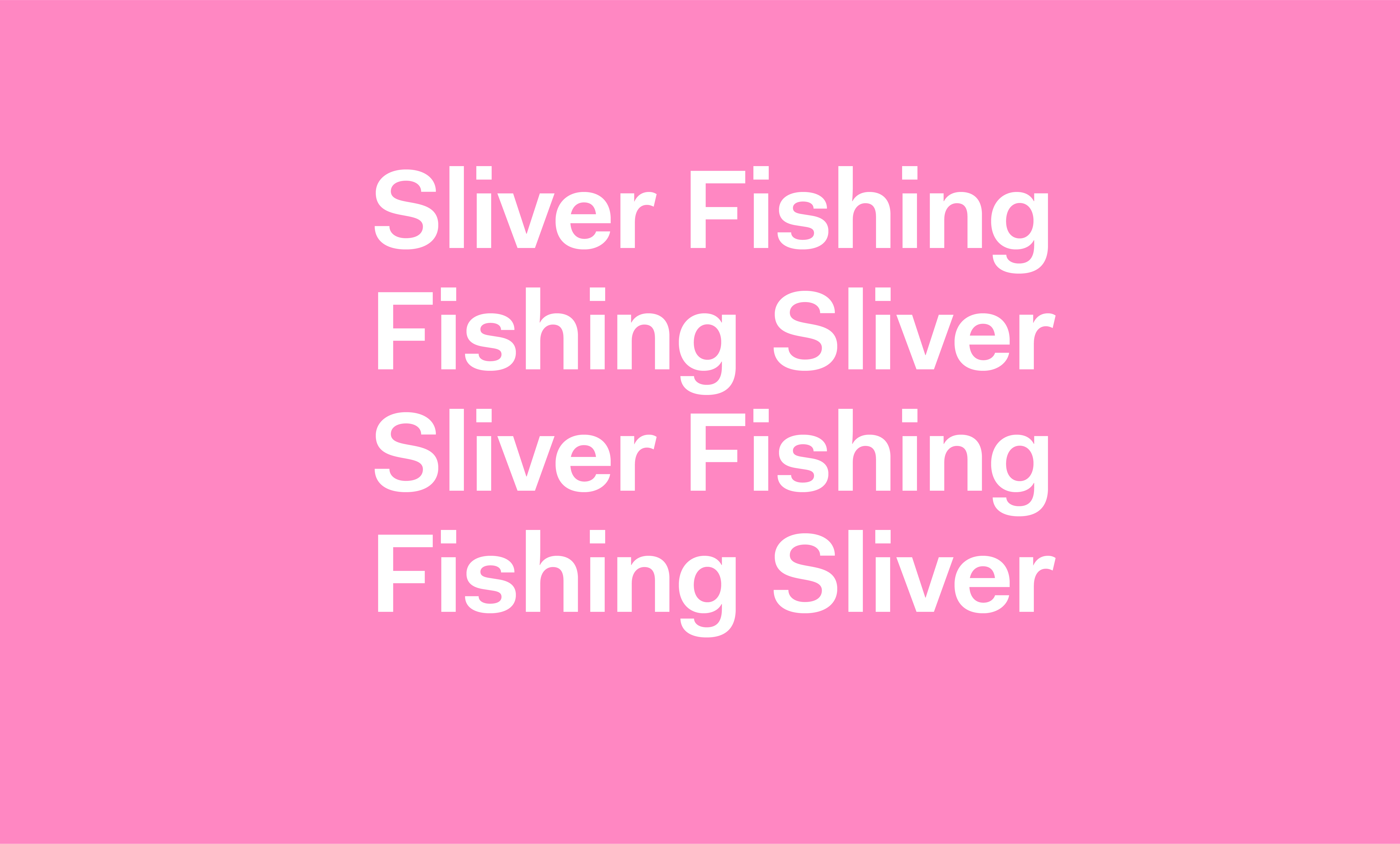Brand is a word that makes me feel a little uncomfortable sometimes.
It often creates a little tension inside me when I use it or write it, because I sometimes wonder whether anyone outside of the branding and marketing industry really understands what the word actually means because it’s been so overused and abused.
It’s certainly easy to get brand fatigue, the way brand is sometimes brandied bandied around. The slide below is from a talk I did back around the turn of the century when I was part of Studio Anybody. We ripped it from someone’s website to make the same point I’m making now, so in twenty years maybe nothing much has changed.

That slide represents a trap that many businesses fall into, not just branding agencies. It’s called marketing to yourself. People love talking about themselves because it’s easy and it makes them feel good, yet, anyone who’s been on the receiving end of this type of conversation at a party knows how boring it is.
I hate to break it to you, but that other person at the party you’re boring to death is your target audience. You know, those people you’re trying to make a great impression on. They don’t necessarily speak your language, and they probably don’t care about you as much as you think, either. If you’re going to keep their attention then you need to be talking to them, in language and with concepts they can relate to.
Branding agencies are as guilty of talking to ourselves as any other industry. Because slapping brand in front everything has almost ruined the word for me (and I suspect many of you), I’d like to reclaim it here by breaking it down, getting rid of the jargon, and illustrating about what a brand is in language that anyone can understand.
So what is a brand then? Well…
It’s your visual identity
It’s your reputation
It’s what you promise
It’s the experience your customers or clients have
It’s the quality of your product or the work you produce
It’s the value you create
It’s your systems and processes
It’s your money back guarantee
It’s your advertising
It’s your people
It’s your culture
It’s who you partner with
It’s online reviews
It’s what people say about you when you’re not in the room
It’s your products
It’s the CEO / Managing Director / Owner
It’s your website
It’s your office environment
It’s the way you answer the phone
It’s what people read about you
Its your vehicles out the road
It’s the content you produce
I could go on, but I think you get the point. Your brand is everything.
I’ve said this to groups of people in many workshops over the years, and while this is true, it’s a statement that still doesn’t sit with me that well either, because, not only does it sound a bit throwaway, I’ve often wondered if it’s very practical.
If ‘your brand is everything’ then what can anyone do with that information? I can’t think of any scenario where ‘focus on everything’ and she’ll be right is very helpful advice. So, what is a brand reallythen?
A brand is an idea
Put simply; a brand is really just an idea that lives in a person’s mind, and that idea is very gradually built over time through experiences – what people see, hear, even touch and smell.
A brand is an idea that is defined by experiences. Some of these experiences you have some control over, but with many of them you have none.
My idea of a particular brand might be different to yours, depending on the way I’ve experienced it, or how it relates to my own goals.
At the end of the day, brand building is about trying to influence this idea inside someone’s mind, to increase the chance that it is salient and readily available at the time when that person is ready to make a decision.
If you’re selling a product, that moment of truth might be in a supermarket. If you’re selling a service, that moment of truth might be during a discussion in a meeting. Quite different scenarios, yet the underlying principle is the same. The brand is an idea that comes to mind to (hopefully) influence that decision.
How can you influence people with your idea?
Unfortunately, there is no magic bullet. Influencing that idea in the mind – building that brand – takes time and an ongoing effort and commitment.
‘Branding demands commitment; commitment to continual reinvention; striking chords with people to stir their emotions; and commitment to imagination. It is easy to be cynical about such things, much harder to be successful’ – Sir Richard Branson
Think about yourself for a moment.
How are you influenced? How do new ideas get into your head? How do they stick?
How do you make your mind up about something, or change your mind about something else?
Through your senses. What you see, what you hear, and what you experience.
The more you’re exposed to an idea, in different ways, perhaps through different media, the more it begins to stick if it resonates with you; that is, if it fits in with your identity or your needs and goals.
Let me tell you a story
Larry is a twenty-five-year-old accountant still living with his parents.
On his daily train commute to work he keeps seeing posters for a new chain of dumpling restaurants. They stand out because of a humorous headline which makes him laugh a bit on the inside. Now that he’s noticed them, Larry starts to see them more and more as he’s out and about on the weekends too (see The Baader-Meinhof Phenomenon).
A couple of weeks later, Larry is swiping through his Instagram feed late morning when he notices an ad in his stories for that dumpling chain again. This time it’s a video of the strange noises people make when slurping down dumplings that grabs his attention, and Larry is reminded of how delicious they are. Mmmm…. Dumplings.
One Friday Larry didn’t bring his lunch to work like he usually does. After a pretty stressful morning with a couple of difficult projects he’s starting to feel a bit hungry and distracted.
Come lunchtime, he’s looking forward to getting out of the office for a bite to eat and a few moments to himself. What about that dumpling chain with those funny ads? Maybe it’s time to try them out. Isn’t there one a few blocks away? He googles the name he remembered from the ads and sure enough, there is one only a short walk away.
It’s a nice day outside as Larry walks a few blocks. Coming around the corner he spots the bright yellow logo from those ads and he unconsciously starts salivating (see Classical Conditioning). He’s looking forward to treating himself with lunch out after such a busy morning.
Larry crosses the street, opens the door underneath the bright yellow sign and heads inside.
Once inside, Larry waits near the entrance as it’s not clear what to do next. There’s no-one there to greet him and it’s not clear whether he should just take a seat or wait to be seated. There’s a counter to the right, but with the two employees talking to each other he’s not sure whether they’re there to take his order either.
Larry thinks to himself while he looks around. ‘It’s not really that welcoming and it’s pretty empty here (that’s called Social Proof) – maybe this isn’t such a great idea’.
Those two employees are still talking to each other and still haven’t noticed Larry. He picks up a crumpled menu, has a brief scan, but something doesn’t feel right and it’s not what he expected (see Cognitive Dissonance). Larry puts the menu down, turns around and walks out the door.
Out on the street feeling disappointed, Larry notices the Golden Arches across the road. He checks his watch and realises he’s wasted twenty minutes of his lunch break already, so he decides to just grab something from McDonalds instead. While he knows it’s not the best food around, but he does know it will be quick and easy, and he knows what he’s going to get.
I made up this story because it illustrates the number of sources of influence that go into building a brand.
That new Dumpling chain;
- Produced some funny print ads that got attention and let people know their name and that they existed ✓
- Followed this up with some funny social ads connecting their delicious product to an experience ✓
- Had a website with easy to find directions ✓
- Made sure the brand identity from their advertising was clearly visible and recognisable for someone walking past ✓
But…
- Their staff were poorly trained ✕
- They hadn’t paid much attention to creating a welcoming environment inside ✕
- They didn’t understand who their real competition was ✕
In a short amount of time all of that great advertising and awareness building was destroyed with a sub-par experience.
Their advertising influenced that idea in the mind really positively, enough to prompt consideration, but the tangible experience had the opposite effect.
All of this is branding, not just the first part. That’s what I mean with ‘your brand is everything’.
So what now?
Now we’ve established just how fragile that a brand is and how it can be influenced in so many ways (many of which you have no control over either), it should be obvious how important the role of strategy is on having the best chance of success with your idea.
Building a brand needs to be a co-ordinated effort from multiple angles, but without a framework to work from it’s understandable how daunting this can sound for most businesses.
That idea needs to be sharp and compelling if it’s going to have any chance of sticking in the mind or having an influence across the multiple mediums and situations it will need to perform in.
Before you start branding to try amplify your idea into the minds of the people you wish to influence/help/sell to, take the time to set yourself up for success.
That means investing time considering things like…
- What does success look like?
- What needs to be done to have the best chance of getting there?
- Who do you need to influence with your idea/brand?
- In what ways are you going to try and influence them?
- Where are you going to have the best chance of getting noticed and influencing these people?
- What does my brand need to look, sound or act like in order to have the best chance at having some influence?
It’s easy to get caught up in the operations of running a business, but the time you invest in crafting your idea/brand before you invest in unleashing it on the world will be returned later, with interest, in the form of an asset that is a real competitive advantage.
The more strategic and disciplined you can be, the less you’ll be leaving up to luck – even though success requires a good dose of that along the way too.




